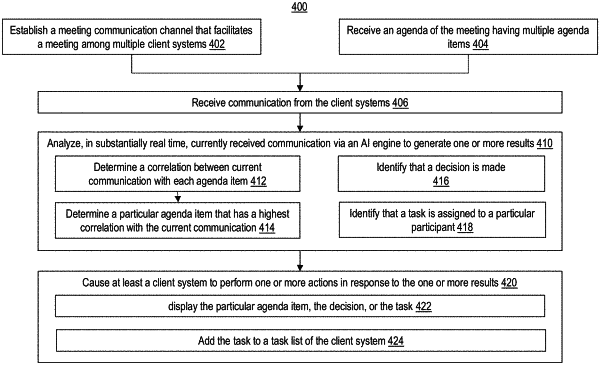| CPC H04L 12/1831 (2013.01) [G06F 40/30 (2020.01); G06N 20/00 (2019.01); G06Q 10/06316 (2013.01); G10L 15/26 (2013.01); H04L 12/1822 (2013.01)] | 20 Claims |

|
1. A computing system that hosts a meeting service having an artificial intelligence (AI) engine comprising:
one or more processors; and
one or more computer-readable media having stored thereon computer-executable instructions that are structured such that, when the computer-executable instructions are executed by the one or more processors, the computer-executable instructions configure the computing system to at least:
establish a meeting communication channel that facilitates a meeting among a plurality of client systems, each of the plurality of client systems corresponding to a meeting participant;
after the meeting is started, receive communication from the plurality of client systems; and
while the meeting remains active,
analyze currently received communication by an AI engine, the currently received communication being a communication received within a rolling time window ending at a current time, the rolling time window having a predetermined size and a predetermined shift amount;
identify (1) an agenda item that has a highest correlation with the currently received communication, and (2) a sentiment of at least one participant;
determine a level of interest of the agenda item based on the sentiment of the at least one participant; and
cause, in substantially real time, at least one of the plurality of client systems to (1) display a notification indicating the level of interest of the agenda item, (2) provide a suggestion to at least one meeting participant based on the level of interest of the agenda item, or (3) display an alert prompting the at least one meeting participant to pay more attention to the meeting.
|